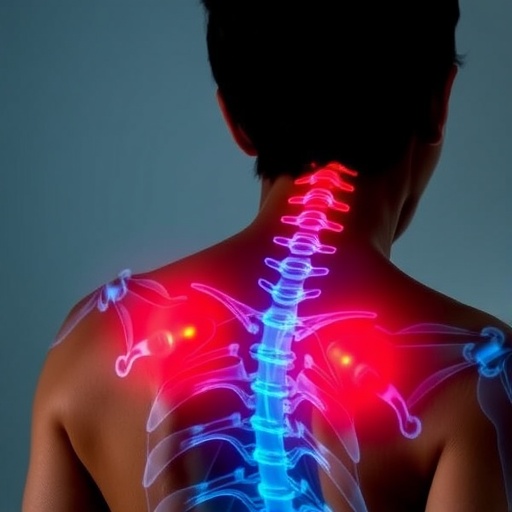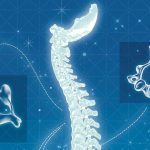Continual decrease again ache will not be merely an disagreeable or inconvenient sickness. New analysis reveals that it might function a key precursor to many different debilitating well being circumstances. Current research spotlight a outstanding correlation between continual low again ache and elevated incidence of non-communicable ailments comparable to heart problems, arthritis, diabetes, despair and sure cancers. These findings problem conventional siloed approaches to managing again ache and name for a paradigm shift in direction of an built-in and complete healthcare framework.
Continual decrease again ache is undoubtedly one of many main causes of incapacity worldwide. Its widespread influence extends past private struggling and locations a big pressure on healthcare infrastructure and financial techniques all over the world. Hundreds of thousands of people have discovered themselves affected by persistent discomfort that disrupt fundamental actions comparable to sitting, standing, and getting a restful sleep. This widespread impediment cascades socioeconomic impacts that undermine productiveness and high quality of life.
In a groundbreaking population-based examine printed within the Brazilian Journal of Physiotherapy, a global consortium of researchers examined knowledge from the Brazilian 2019 Nationwide Well being Survey. The examine, spanning almost 90,000 topics, offered an unprecedented alternative to evaluate the prevalence of continual low again ache together with comorbidities in middle-income international locations. The findings mirror patterns noticed, significantly in rich international locations, highlighting the worldwide significance of the affiliation between continual low again ache and a number of continual ailments.
This examine demonstrated that people experiencing continual low again ache had a considerably increased charge of heart problems, arthritis and scientific despair. Particularly, individuals with decrease again ache had been 17% extra prone to report heart problems, with an inclination to undergo from arthritis and a 12% enhance of their tendency to develop despair in comparison with their painless counterparts. Such statistics reveal the disastrous intersections of musculoskeletal ache and systemic well being challenges, suggesting shared pathophysiological or lifestyle-related danger elements.
Past these high three comorbidities, this examine revealed an elevated incidence of diabetes, most cancers, bronchial asthma, and different pulmonary circumstances amongst individuals affected by continual low again ache. These convergences spotlight the multifaceted burdens this inhabitants carries and lift vital questions concerning the underlying mechanisms that hyperlink musculoskeletal issues with widespread metabolic and inflammatory pathology.
The prevalence of continual low again ache in Australia and related comorbidities additional display its magnitude as a public well being concern. Roughly 4 million Australians undergo from again issues, and virtually 75% of those people have a minimum of one continual situation that’s older than 45 years previous. This co-occurrence continually amplifies the severity of exercise restriction, particularly when arthritis, despair, or heart problems coexists with decrease again ache, which considerably reduces purposeful independence.
Restriction of exercise, an vital consequence measure, captures the extent to which continual sickness impairs a person’s means to have interaction in day by day duties. This examine discovered that adults who concurrently compete for decrease again ache and arthritis had been greater than twice as prone to expertise vital limitations in day by day actions than these with out this coexistent situation. This synergistic impact of issues emphasizes the vital significance of stopping issues to be able to diagnose and handle coexistence circumstances.
Dr. Rafael Zamberg Pinto, a principal investigator and physiotherapist at Sydney Institute of Expertise, highlighted the advanced interactions between these circumstances. He famous that whereas causality stays unclear, constellations of shared danger elements, comparable to sedentary life-style, weight problems, psychological stress, and poor sleep high quality, promote the co-incidence of again ache together with different non-infectious ailments. Addressing these modifiable elements represents a promising measure to alleviate the general burden.
The implications of this examine transcend epidemiological insights. They’ve deep scientific relevance. The usually slender focus of ache administration within the therapy of continual low again ache can incorrectly overlook the broader systemic well being challenges sufferers can endure. Recognizing continual low again ache as a marker of multisystem illness requires built-in, interdisciplinary therapy methods that concurrently goal ache aid, comorbidity administration, and life-style modification.
Clinicians are inspired to undertake a holistic care mannequin that includes a various vary of well being professionals, together with bodily therapists, psychological well being specialists, cardiologists and endocrinologists, and coordinate customized therapy regimens. Complete care pathways designed to display screen and tackle associated non-communicable ailments can scale back cumulative perform decline, optimize high quality of life, and scale back healthcare entry prices.
Moreover, well being coverage stakeholders ought to prioritize analysis and useful resource allocation to an built-in administration framework. Intensifying public well being initiatives that promote bodily exercise, weight administration, stress discount and sleep hygiene can function vital preventive methods. Instructional campaigns geared toward elevating consciousness of the interconnectedness of decrease again ache and systemic well being circumstances could promote earlier interventions and enhance affected person outcomes.
This pioneering examine performed in middle-income international locations reinforces the phenomenon, though not restricted to rich populations, is universally associated. Its substantial pattern measurement, rigorous methodology, and joint worldwide efforts present the robustness and generalizability of the findings. Importantly, the shortage of declaration of battle of curiosity emphasizes the equity of the analysis conclusions.
In conclusion, continual low again ache manifests not solely as a neighborhood musculoskeletal dysfunction, but additionally as an built-in marker of broader non-communicable illness burden. The advanced relationship between decrease again ache and circumstances comparable to heart problems, arthritis, and despair requires a rethinked strategy in each scientific observe and public well being. Addressing these interconnected well being challenges by means of complete, interdisciplinary care is of paramount significance in lowering the rising social influence of continual ache and multiples.
Research topic: Peoplearticle Title: Non-communicable illness, prevalence of a number of ailments, and the influence on exercise restrictions in adults with continual low again ache: Center-income international locations primarily based analysis publication date Arthritis, despair, exercise restrictions, multidisciplinary care, inhabitants well being, epidemiology
Tags: Hyperlink-back well being indicators for arthritis and decrease again ache and cardiovascular ailments, and continual pain-related dysfunction statistics









